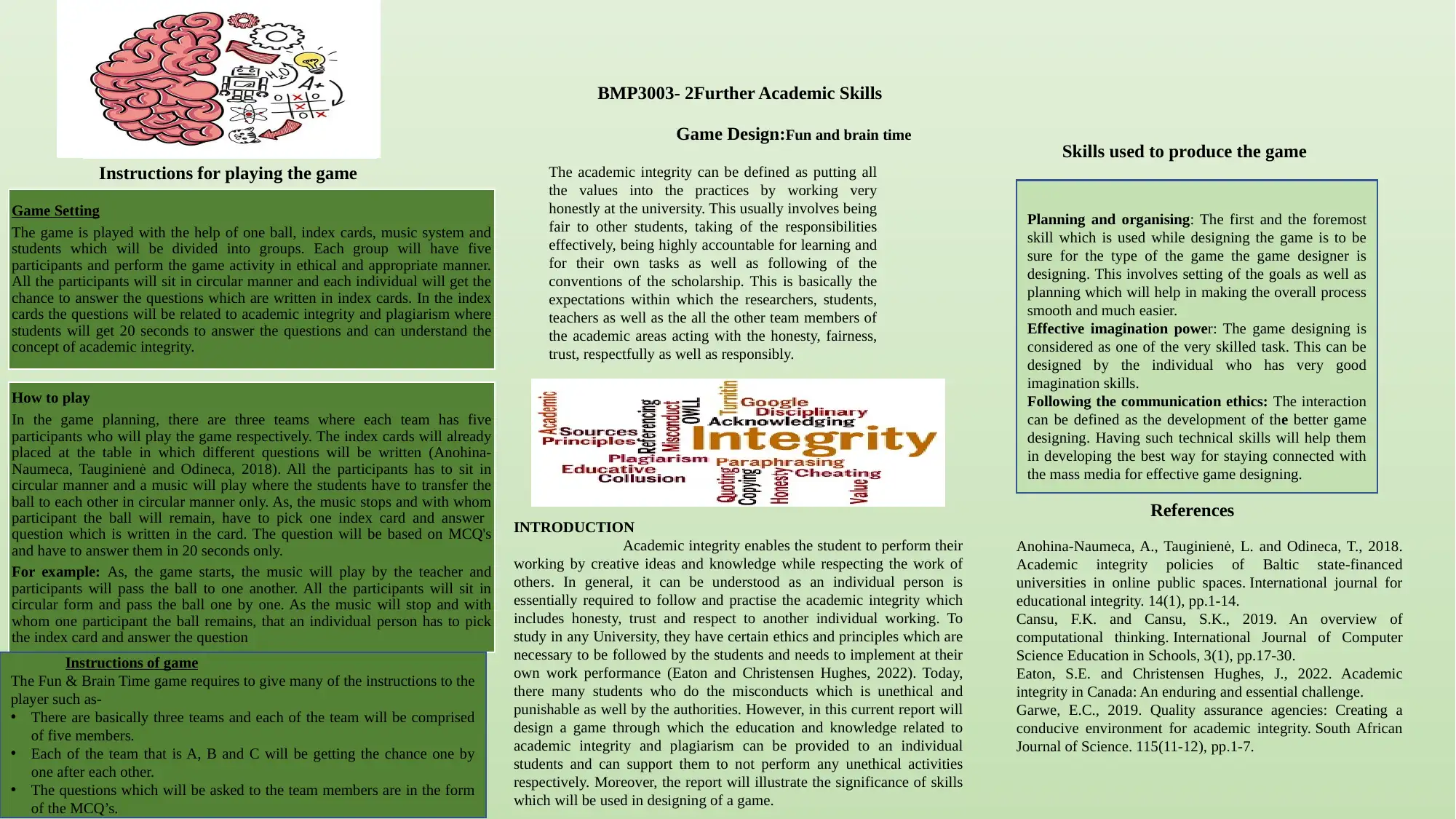Game Design: Fun and Brain Time for Understanding Academic Integrity
VerifiedAdded on 2023/06/08
|1
|937
|439
AI Summary
This presentation explains the game design for understanding academic integrity and plagiarism. It includes instructions for playing the game, game setting, and skills used to produce the game.
Contribute Materials
Your contribution can guide someone’s learning journey. Share your
documents today.
1 out of 1



![[object Object]](/_next/static/media/star-bottom.7253800d.svg)